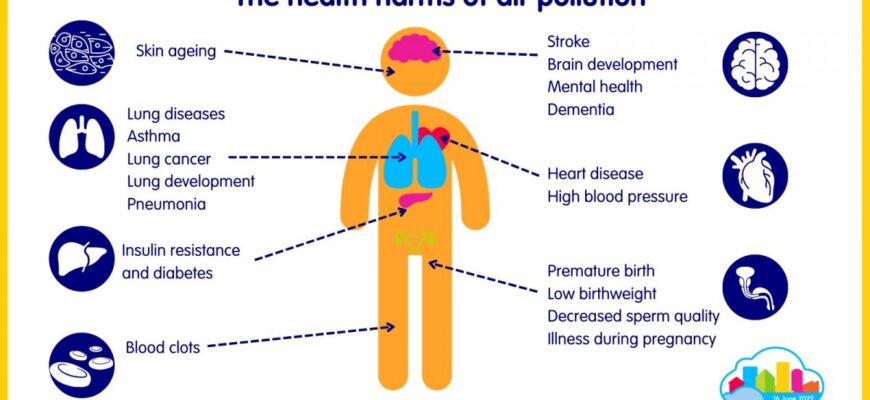For decades, public health warnings have rightly focused on the respiratory and cardiovascular damage caused by air pollution. Yet, a rapidly growing body of evidence now points to a more insidious threat: its profound effect on our brains. A recent, comprehensive international study has revealed a startling and undeniable link between prolonged exposure to contaminated outdoor air and a significantly elevated risk of developing dementia.
The Invisible Threat: Air Quality and Cognitive Decline
Imagine the very air you breathe not just as life-sustaining, but as an unseen architect, slowly, incrementally, remodeling the delicate landscape of your brain. This isn`t a dystopian fantasy, but a scientific revelation underscored by a groundbreaking meta-analysis published in the prestigious journal *The Lancet Planetary Health*. A collaborative effort by researchers from institutions including Cambridge University, this study synthesized data from an astounding 51 individual investigations, encompassing nearly 30 million people. The sheer scale and rigor of this research demand our immediate and serious attention.
The findings are stark and unequivocal: living in areas with elevated concentrations of fine particulate matter (PM2.5), nitrogen dioxide (NO₂), and soot demonstrably increases a person`s susceptibility to various forms of dementia, including the devastating Alzheimer`s disease and vascular dementia. To put it into quantifiable terms, the study found that every additional 10 micrograms per cubic meter (µg/m³) increase in PM2.5 was associated with a remarkable 17 percent higher risk of dementia. Similarly, a 10 µg/m³ rise in NO₂ levels corresponded to a 3 percent increase in risk. These aren`t minor statistical anomalies; they represent a significant and growing environmental burden on neurological health.
The Mechanisms of Damage: When Air Attacks Neurons
So, how exactly do microscopic airborne particles, invisible to the naked eye, wreak such havoc on the brain—the body`s most complex and protected organ? The researchers propose a straightforward, albeit unsettling, biological mechanism: chronic inflammation and oxidative stress. When these pollutants enter the body, they don`t simply remain in the lungs. They can penetrate deep into the bloodstream and even cross the blood-brain barrier, triggering a systemic inflammatory response. This persistent inflammation, coupled with oxidative stress—an imbalance between harmful free radicals and the body`s ability to neutralize them—can progressively damage nerve cells and neural pathways over time. Think of it as a low-grade, constant assault on your brain`s delicate infrastructure, eroding its resilience and impairing its function.
“It seems our modern urban environments, while offering unparalleled convenience and connectivity, might also be subtly sabotaging our cognitive futures. The irony is not lost: as we build higher and connect faster, we might be inadvertently contributing to the decline of the very minds that drive such progress.”
A Call to Action: Breathing Easier, Thinking Clearer
The implications of this research are profound, extending far beyond individual health. It transforms air pollution from merely an environmental nuisance into a critical public health crisis with significant neurological consequences. The study`s authors unequivocally stress that mitigating air pollution isn`t just an ecological imperative; it`s a vital strategy for safeguarding brain health, offering long-term benefits for both public well-being and national economies. Healthier brains, after all, contribute to a more productive, innovative, and resilient society.
The scientific community`s message is clear and urgent: policymakers must act decisively. This means focusing on:
- Stricter Environmental Regulations: Particularly targeting emissions from transportation and industrial sectors, which are major contributors to airborne pollutants. Implementing and enforcing more stringent standards is crucial.
- Expanded Global Research: A critical need for more extensive studies, especially in low and middle-income countries, where pollution levels are often higher and the long-term health impacts are less thoroughly documented. Understanding the global burden is key to designing effective and equitable interventions.
While the spotlight of this research is firmly on air quality, it is worth noting that the broader fight against dementia encompasses multiple fronts. Other studies, for instance, have highlighted the potential of non-pharmacological interventions, such as music therapy, to improve the quality of life for dementia patients, assisting with memory, reducing anxiety, and even potentially slowing symptom progression. These diverse approaches underscore the multifaceted nature of dementia care and prevention, where environmental health converges with medical and therapeutic advancements.
Ultimately, the air we breathe is a shared resource, and its quality directly impacts our collective future. This new research serves as a potent and timely reminder that our environmental choices have profound and far-reaching consequences, extending even to the intricate workings of the human mind. Clean air, it turns out, is not just about clear lungs; it`s fundamentally about clear thinking, now and for generations to come.








